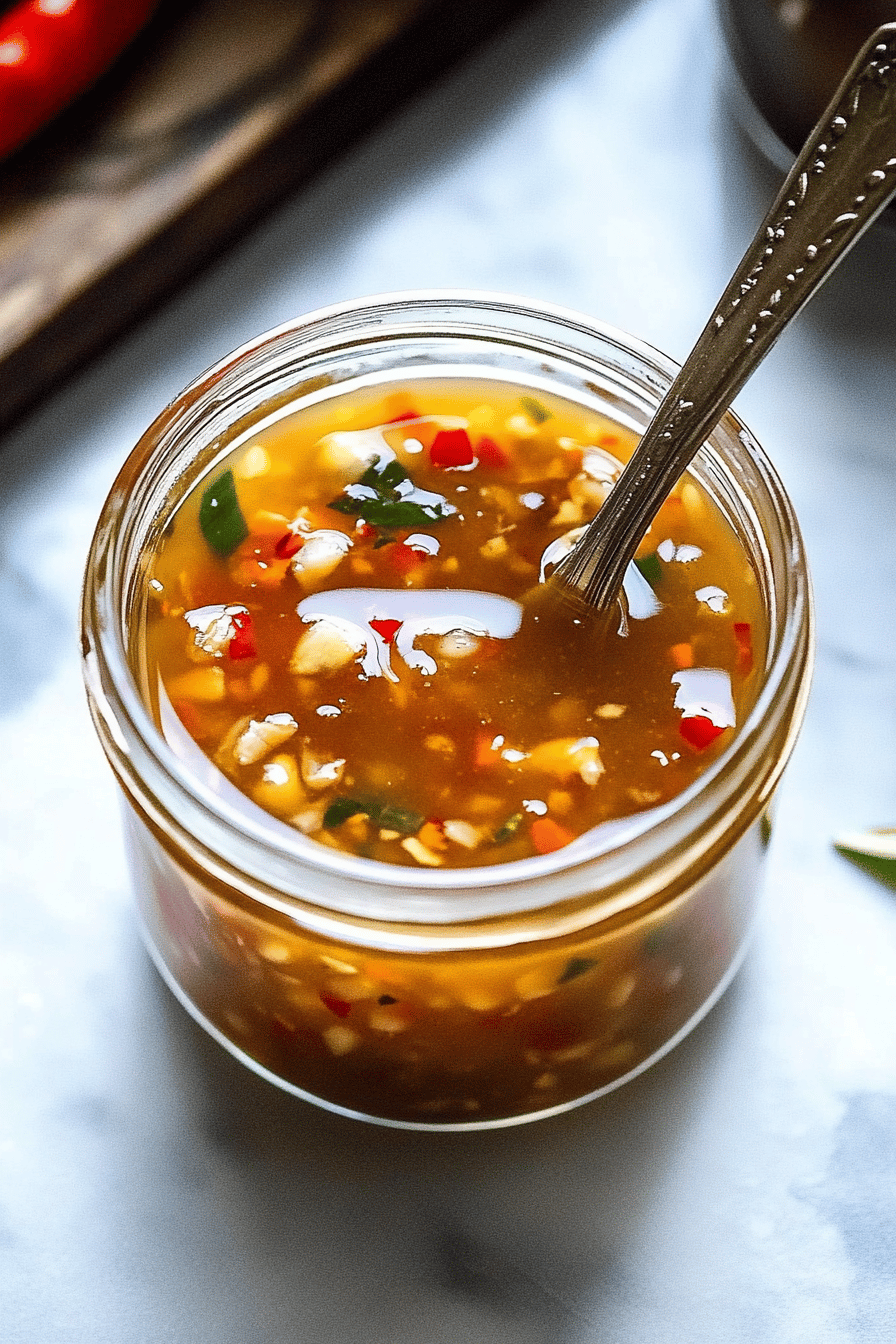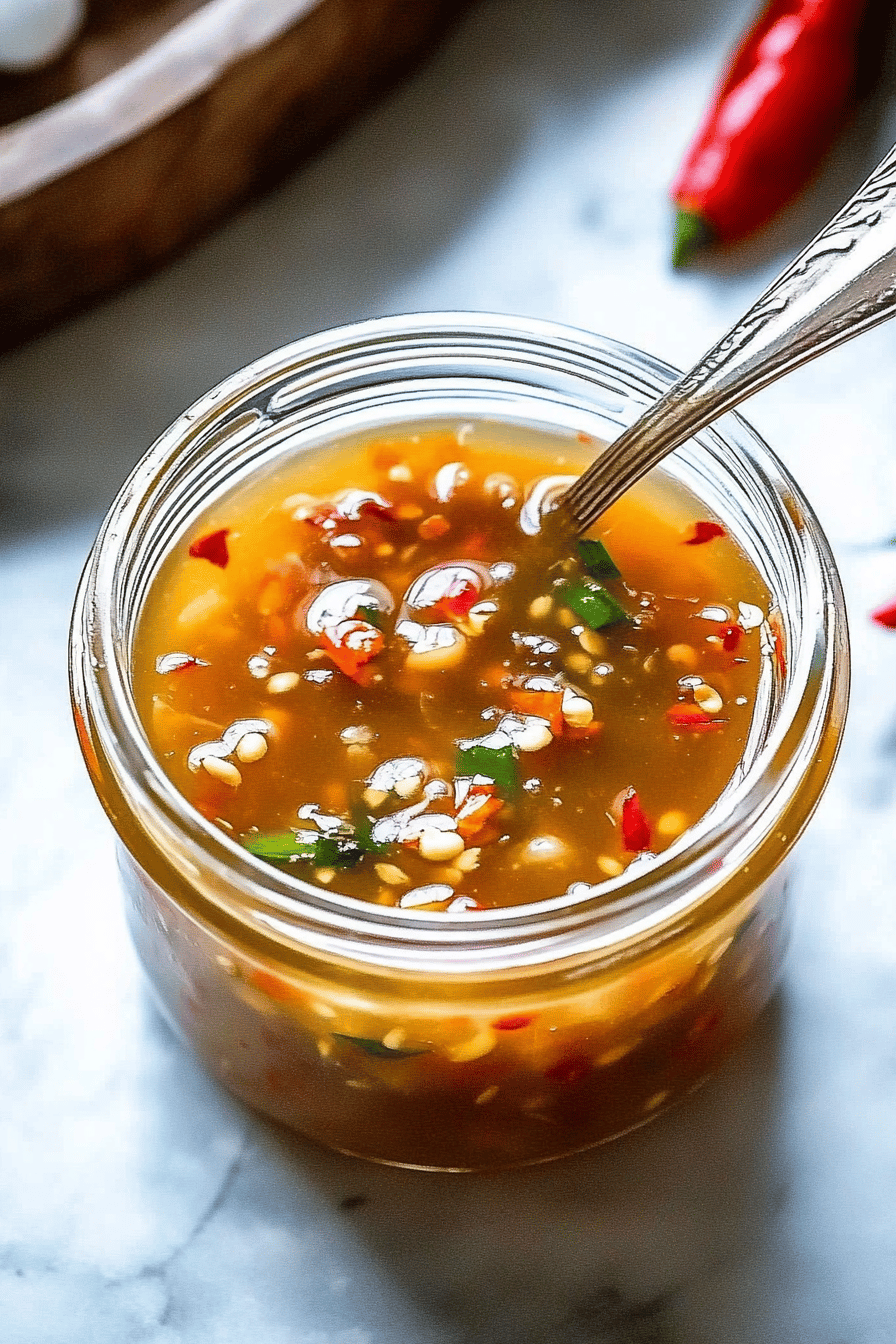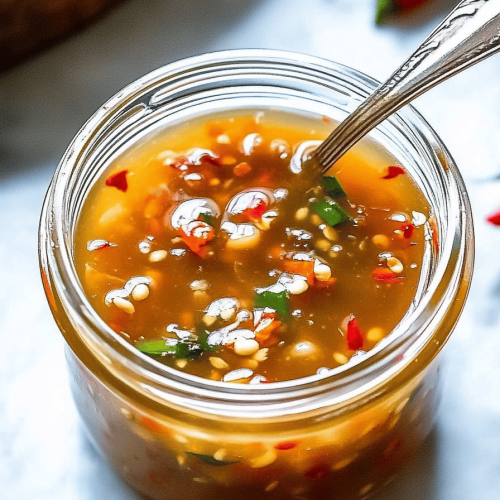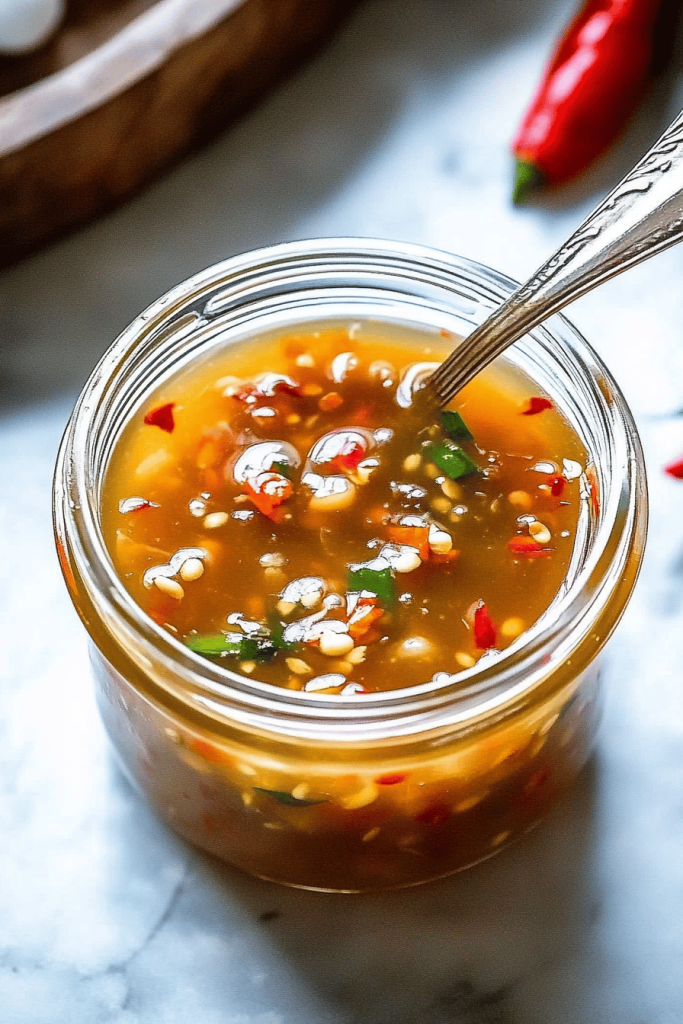In Vietnamese cuisine, the Fish Sauce Recipe embodies a rich tradition of flavor that enhances countless dishes. With each meal, the umami-rich touch of fish sauce elevates every bite, transforming ordinary ingredients into a gastronomic delight. This exquisite blend of fermented fish and sea salt has been a staple in Vietnamese kitchens for generations, and now you can master its creation at home. Prepare to dive into the depths of taste as we explore this beloved, versatile ingredient. Perfecting it is an art of its own, starting with understanding the subtle balance of flavors.

As a child, I would watch my grandmother deftly mix fish sauce with different ingredients, preparing meals that are now central to my fondest memories. Each dish was a unique creation, yet they all shared the unmistakable depth offered by her secret fish Sauce Recipe. Her kitchen was filled with the complex aromas of fermenting fish, which at first startled my senses but soon became a comforting and nostalgic smell. Family gatherings were incomplete without her signature sauce, leaving everyone savoring the lingering taste long after the meal ended.
Why You’ll Love This Recipe
This fish Sauce Recipe is not just about replicating a traditional Vietnamese staple; it’s about unlocking endless culinary possibilities. With its deeply savory and slightly sweet profile, it complements any dish, from spring rolls to grilled meats. Its versatility allows you to adjust levels to fit any palate, catering to those who crave mild nuances or bold flavors. In addition to its taste, this recipe is practical. It uses easily accessible ingredients and offers a straightforward process, making it achievable for home cooks everywhere. Once incorporated into your repertoire, this fish sauce will elevate your dishes to new heights.
Ingredients Notes
The essence of great fish sauce lies in the quality of its ingredients. Traditional recipes call for freshly caught anchovies, but sardines or mackerel can work as substitutes, offering a slightly different flavor profile. Look for fish treated without preservatives for the purest taste. Sea salt plays a crucial role, aiding in fermentation. If unavailable, kosher salt is an excellent alternative but may alter the fermentation time slightly. Feel free to add a bit of sugar for sweet notes, and experiment with garlic or chili for different flavors. Always choose fresh, high-quality produce for the Best results.

Recipe Steps
Step 1
Begin by rinsing the fish thoroughly under cold water. This step is crucial to remove any impurities and ensure a clean fermentation process. Once rinsed, pat the fish dry with a clean towel. Cutting the fish into small pieces will aid in a quicker and more even fermentation.
Step 2
Mix the fish with salt in a large, non-reactive container. The ratio typically used is 3 parts fish to 1 part salt. This proportion helps facilitate fermentation while preventing spoilage. Stir the mixture well to ensure each piece of fish is adequately coated with salt.
Step 3
Tightly seal the container and allow the mixture to ferment. Place the container in a warm, sunny location, as temperature significantly impacts the fermentation process. You may need to stir the mixture occasionally. Depending on the climate, fermentation can take anywhere from six months to a year.
Step 4
After fermentation, strain the mixture through a fine sieve or cheesecloth to separate the liquid. This liquid is your homemade fish sauce. For a clearer sauce, you can repeat the straining process or let it sit to allow any sediments to settle naturally.
Step 5
Transfer the fish sauce to sterilized jars for storage. It should have a rich amber hue and a complex aroma, indicative of successful fermentation. Store it in a cool, dark place, ideally in the refrigerator, to maintain its quality for future use.
Storage Options
Proper storage of fish sauce is key to maintaining its flavor and longevity. Once bottled, this fish sauce can be kept in the refrigerator for up to two years. Ensure the bottles are sealed tightly to prevent spoilage or contamination. For longer preservation, you can freeze portions of the sauce in ice cube trays. This way, you can conveniently defrost and use a small amount without thawing the entire batch. If the sauce develops an off smell or color, it is best discarded.
Variations & Substitutions
For those with dietary restrictions, consider a version using mushrooms to create a vegetarian “fish” sauce. The umami flavor of mushrooms, combined with soy sauce, can mimic the depth fish sauce brings to dishes. Alternatively, a mix of tamari, seaweed, and miso paste can provide a similar savory profile. Adjust seasoning levels based on personal preference, keeping in mind that these substitutes may not have the same shelf life as traditional fish sauce. For a sweeter twist, Apple Cider vinegar can replace some of the salt, bringing a different, yet delicious, balance of flavors.
Serving Suggestions
Fish sauce is more than just a condiment; it’s a transformative ingredient that enhances various cuisines. Drizzle it over noodle dishes, or mix it with lime juice, sugar, and chilies to create a vibrant dipping sauce. It’s an excellent marinade for grilled meats or seafood, infusing them with a deep, umami richness. Incorporate it into salad dressings for an unexpected flavor boost. Regardless of the occasion, fish sauce promises to bring any meal to life with its distinct, savory notes, making your culinary experiences unforgettable.
Frequently Asked Questions
Can I use other types of fish? Yes, you can substitute anchovies with sardines or mackerel. Each fish type imparts a unique flavor, allowing for a personalized touch in your fish sauce. However, ensure the fish is fresh and free from preservatives to achieve the best fermentation results.
How long does it take for the fish sauce to ferment? The fermentation process generally takes six months to a year. The duration depends on factors such as the climate, the container used, and the fish-to-salt ratio. Warmer temperatures often speed up the process, resulting in a more robust flavor profile.
What should I do if my fish sauce smells off? A slight smell is typical due to the fermentation process, but if the odor becomes foul, it might indicate spoilage. Ensure an airtight seal during fermentation to minimize such issues. When in doubt, it’s best to discard any suspicious-smelling fish sauce to avoid health risks.
Is it necessary to refrigerate fish sauce? While refrigeration is not mandatory, it helps retain the sauce’s flavor and quality over time. An airtight bottle stored in a cool, dark place will prevent oxidation, extending the fish sauce’s shelf life substantially.
Can fish sauce be used in non-Vietnamese dishes? Absolutely! Fish sauce adds a savory depth to any cuisine. It complements Western dishes like pasta sauces, soups, and even barbecued dishes. Experimenting with fish sauce in different recipes can lead to delightful flavor discoveries.


Vietnamese Fish Sauce Recipe
Ingredients
Main Ingredients
- 0.25 cup fish sauce
- 0.25 cup lime juice freshly squeezed
- 3 tablespoons sugar
- 2 cloves garlic minced
- 1 piece red chili sliced
Instructions
Preparation Steps
- In a small bowl, combine fish sauce and lime juice.
- Add sugar and stir until dissolved.
- Mix in minced garlic and sliced red chili.
- Serve as a dipping sauce or condiment.
Notes
Featured Comments
“Impressed! Clear steps and perfect for busy nights results. Perfect for busy nights.”
“New favorite here — creamy. crowd-pleaser was spot on.”
“Super easy and turned out amazing! My family asked for seconds. Saving this one.”
“This sweet treat was absolutely loved — the buttery really stands out. Thanks!”
“Made it tonight and wow — comforting! Will definitely make Best 7 Steps to a Perfect Vietnamese Fish Sauce Recipe (Nuoc Cham) again.”
“Packed with flavor and so simple. Exactly what I wanted from Best 7 Steps to a Perfect Vietnamese Fish Sauce Recipe (Nuoc Cham).”












